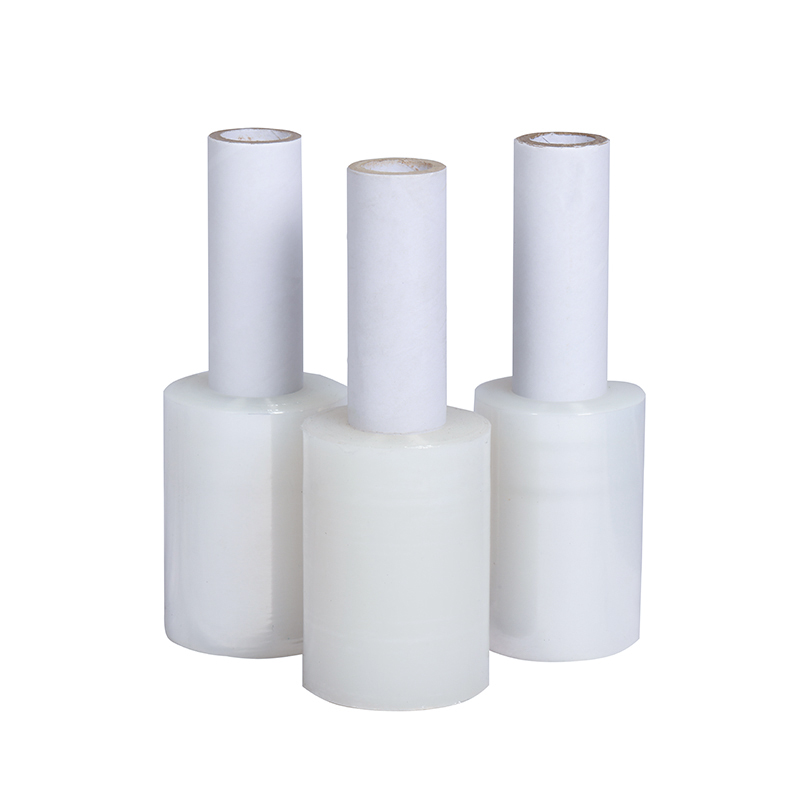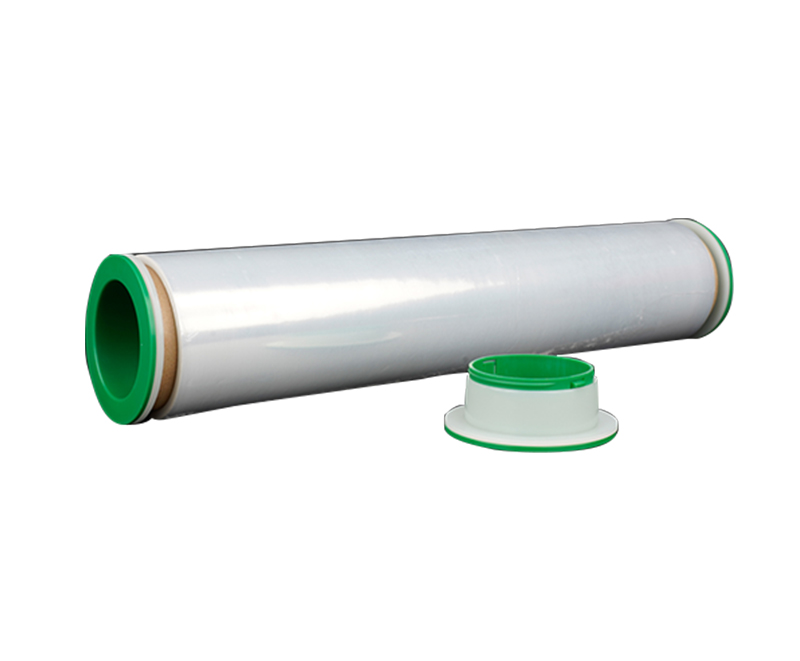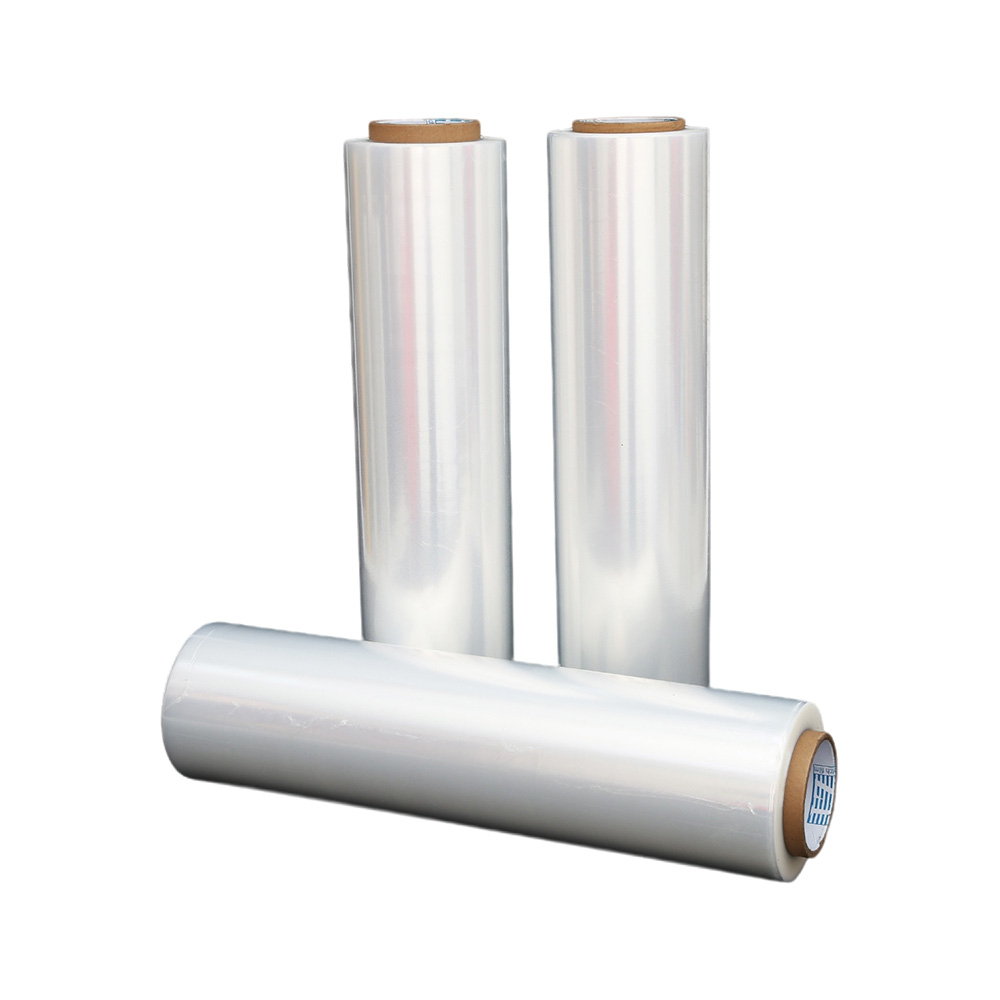Opaque Stretch Film: Security, UV Protection & Benefits
Source:Opaque Stretch Film: Security, UV Protection & BenefitsTime:2025-05-12Visitors:
When securing goods for shipping or storage, stretch film is a trusted solution—but choosing an opaque stretch film can elevate your packaging strategy. Unlike clear stretch film, which reveals load contents, opaque stretch film, typically black or white, conceals what’s inside, offering unique benefits. From deterring theft to protecting against harsh weather, opaque stretch film is a game-changer for specific applications.
This guide explores the advantages of using opaque stretch film, its applications, and how it compares to clear stretch film. Whether you’re a logistics manager, small business owner, or packaging enthusiast, you’ll learn why opaque stretch film might be the ideal choice for your needs.
What is Opaque Stretch Film?
Opaque stretch film is a non-transparent plastic wrap made from linear low-density polyethylene (LLDPE), infused with pigments or additives to block visibility. Available in colors like black or white, it’s designed to conceal load contents, unlike clear stretch film, which allows easy inspection. Its elasticity, cling, and puncture resistance make it ideal for securing pallets, bundling products, or protecting goods during transit and storage.
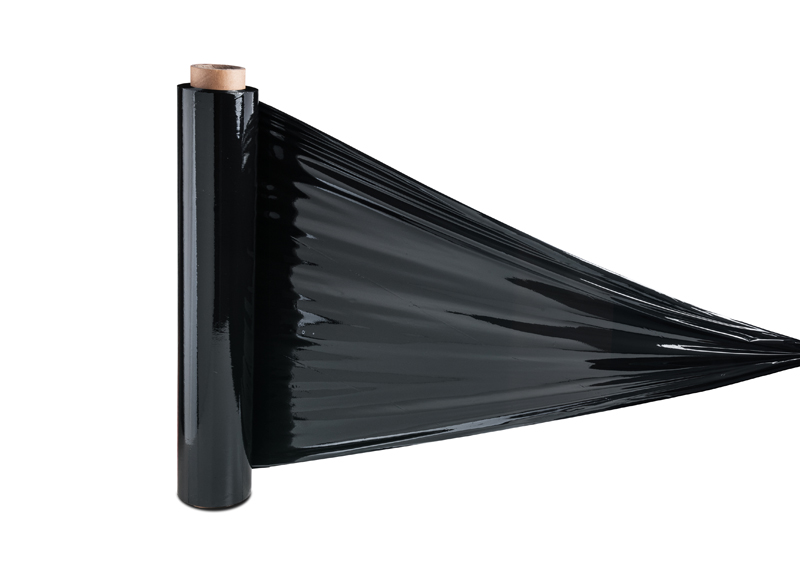
How It Differs from Clear Stretch Film
- Visibility: Clear film shows contents for easy scanning or display; opaque film hides them for security.
- Additives: Opaque films often include UV inhibitors or heat-reflective properties, enhancing durability.
- Applications: Opaque film suits high-security or outdoor needs, while clear film is common for retail or indoor use.
Advantages of Opaque Stretch Film
Opaque stretch film offers distinct benefits that make it a preferred choice in various scenarios. Below are the key advantages, supported by practical examples and insights.
Enhanced Security Through Concealment
Opaque stretch film’s primary advantage is its ability to hide load contents, reducing the risk of theft or pilferage. By concealing valuable or sensitive items, it deters potential thieves who rely on visibility to target shipments. For example, a logistics company shipping electronics might use black opaque film to prevent thieves from identifying high-value goods, potentially reducing pilferage by up to 30%, as suggested by industry reports .
Superior UV Protection
Opaque stretch film, especially when formulated with UV inhibitors, protects both the film and its contents from ultraviolet (UV) ray damage. UV exposure can degrade plastic films, causing brittleness, and harm sensitive products like chemicals or food. Opaque films with UV protection are ideal for outdoor storage or transportation in sunny climates, extending the lifespan of goods and film by 3–6 months compared to clear films . For instance, farmers wrapping hay bales with UV-resistant opaque film ensure feed quality during long-term outdoor storage.
Improved Environmental Protection
Opaque stretch film acts as a robust barrier against environmental factors like rain, dew, dust, and dirt. Its thickness and composition enhance resistance to tearing and puncturing, keeping loads clean and dry even in adverse weather. This is critical for industries like construction, where materials like pipes or lumber stored outdoors need protection from moisture damage . Opaque film’s weatherproofing ensures product integrity during transit or storage.
Increased Durability and Longevity
Thanks to its UV-resistant additives and often thicker gauge, opaque stretch film outlasts clear film in harsh conditions. It’s less likely to degrade or break when exposed to sunlight, wind, or rain, reducing the need for frequent rewrapping. For example, a warehouse storing goods outdoors for over 60 days can rely on opaque UV stretch film to maintain load integrity, potentially saving on replacement costs .
Cost-Effectiveness in the Long Run
While opaque stretch film may cost slightly more upfront than clear film, its durability and protective qualities lead to long-term savings. By minimizing damage from theft, UV exposure, or environmental factors, businesses reduce losses and rewrapping expenses. For instance, a retailer using opaque film to secure high-value shipments might avoid costly pilferage incidents, offsetting the initial investment .
Additional Benefits
- Color Coding: Opaque films, available in colors like black or white, aid in load identification and warehouse organization. For example, a distribution center might use black film for one product line and white for another, streamlining inventory management .
- Heat Reflection: White opaque film reflects heat, reducing temperature buildup in hot climates, which is beneficial for sensitive goods like electronics or perishables .
Applications of Opaque Stretch Film
Opaque stretch film is particularly valuable in industries and scenarios where security, UV protection, or environmental resistance is critical. Key applications include:
- Logistics and Warehousing: Securing high-value shipments, such as electronics or pharmaceuticals, to prevent theft.
- Retail: Bundling products while concealing contents, ideal for valuable or sensitive items like jewelry or luxury goods.
- Agriculture: Wrapping hay bales or silage to protect from UV damage and weather, ensuring feed quality.
- Construction: Securing building materials like lumber or pipes stored outdoors, shielding them from rain and dust.
- Manufacturing: Protecting finished goods during transit, especially those sensitive to UV light or environmental exposure.
For example, a construction company might use black opaque stretch film to wrap steel pipes stored on-site, ensuring they remain rust-free despite months of exposure to rain and sun.
Choosing the Right Opaque Stretch Film
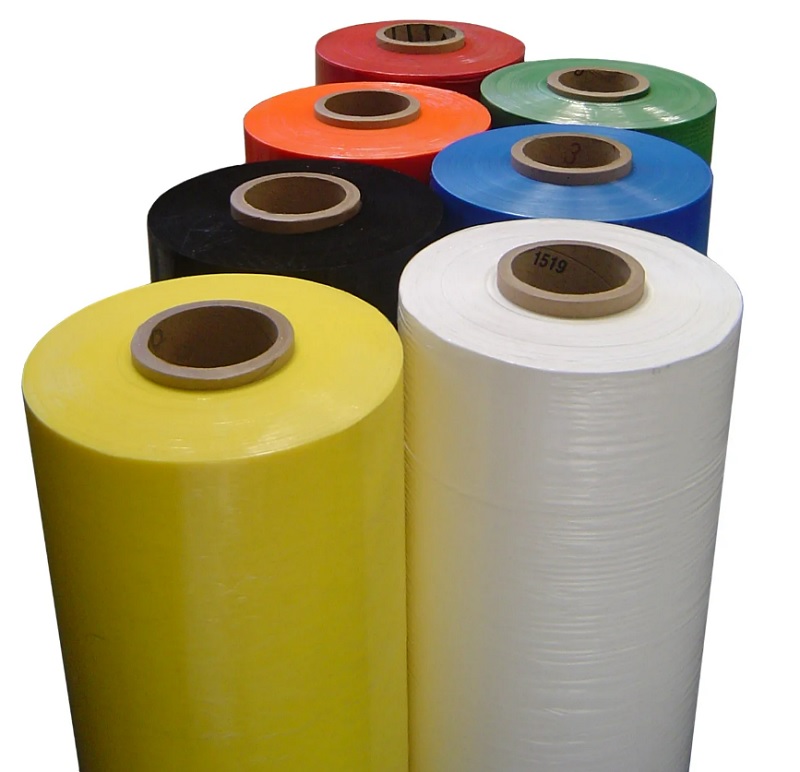
Selecting the appropriate opaque stretch film depends on your specific needs. Consider these factors:
- Thickness: Thicker films (e.g., 100 gauge or 25.4 microns) offer better durability for heavy or sharp loads, while thinner films (e.g., 50 gauge) suit lighter applications.
- UV Resistance: Essential for outdoor storage; look for films with UV inhibitors for shipments exposed beyond 60 days.
- Application Method: Hand-applied films are ideal for small operations; machine-applied films suit high-volume warehouses.
- Color: Black provides maximum concealment; white reflects heat, beneficial in hot climates.
Tips for Selection:
- Request samples to test film performance with your loads and equipment.
- Consult packaging experts to match film specifications to your needs.
- Verify recyclability with local facilities to ensure eco-friendly disposal.
Sustainability Aspects
Opaque stretch film is typically made from recyclable LLDPE, aligning with sustainable packaging practices. Many manufacturers offer films made from post-consumer resin or biodegradable materials, reducing environmental impact . To maximize sustainability:
- Collect used film for recycling at local facilities that accept soft plastics.
- Opt for thinner films (e.g., 50 gauge) to minimize plastic use without compromising strength.
- Choose suppliers offering eco-friendly options, such as biodegradable or recycled-content films.
Limitations of Opaque Stretch Film
While opaque stretch film offers significant advantages, it’s not ideal for every scenario:
- Cost: Slightly higher upfront cost than clear film, though long-term savings often offset this.
- Visibility: Not suitable for applications requiring product visibility, such as retail displays or barcode scanning.
- Niche Use: May be unnecessary for low-risk, indoor storage where clear film suffices.
These limitations are minor compared to the benefits in high-security or outdoor applications, making opaque film a strategic choice for specific needs.
Frequently Asked Questions
- Is opaque stretch film recyclable? Yes, most opaque stretch films are made from recyclable LLDPE. Check with local recycling centers for soft plastics acceptance.
- Can opaque stretch film be used for food packaging? It depends on the film’s composition; ensure it’s food-safe and FDA-compliant for direct food contact.
- How long does opaque stretch film last outdoors? With UV inhibitors, it can last 3–6 months or more, compared to 1–2 months for clear film.
Conclusion
Opaque stretch film offers a compelling set of advantages for businesses seeking enhanced security, UV protection, and environmental resistance. By concealing load contents, shielding against sun and weather, and lasting longer in tough conditions, it’s an ideal choice for high-value shipments, outdoor storage, or sensitive goods. While slightly more expensive than clear film, its durability and protective qualities deliver long-term cost savings and peace of mind.
Evaluate your packaging needs and consider opaque stretch film for scenarios where security and protection are paramount. For tailored solutions, consult with packaging experts to find the perfect film for your operations.
Recommended Products
Ranked in the same article
- how to use the stretch film technology to r
- How can we get detailed price list?
- Five common quality problems of PE protecti
- Plastic film degradation
- How to guarantee punctual shipment for our
- Gauge to Micron and Millimetre Conversion G
- What is the difference between stretch film
- Testing the permeability of stretch film
- Stretch film temperature requirements
- Electrical wire film VS electrostatic film
- Why insufficient transparency of stretch w
Latest news articles
- The significance of using PE electric wire
- The Ultimate Guide to Choosing the Right Ma
- Bundling Stretch Film: Optimize Your Packag
- What Properties Ensure Effective Cold Chain
- How can PE stretch film be cut better?
- How to check the quality of PE stretch film
- Advantages of white engineering film
- Factors affecting viscosity of PE stretch f
- The 133rd Spring Canton Fair
- What is the Difference Between Magic Tape a
- Stretch Film Wrap: Unraveling Its Benefits

